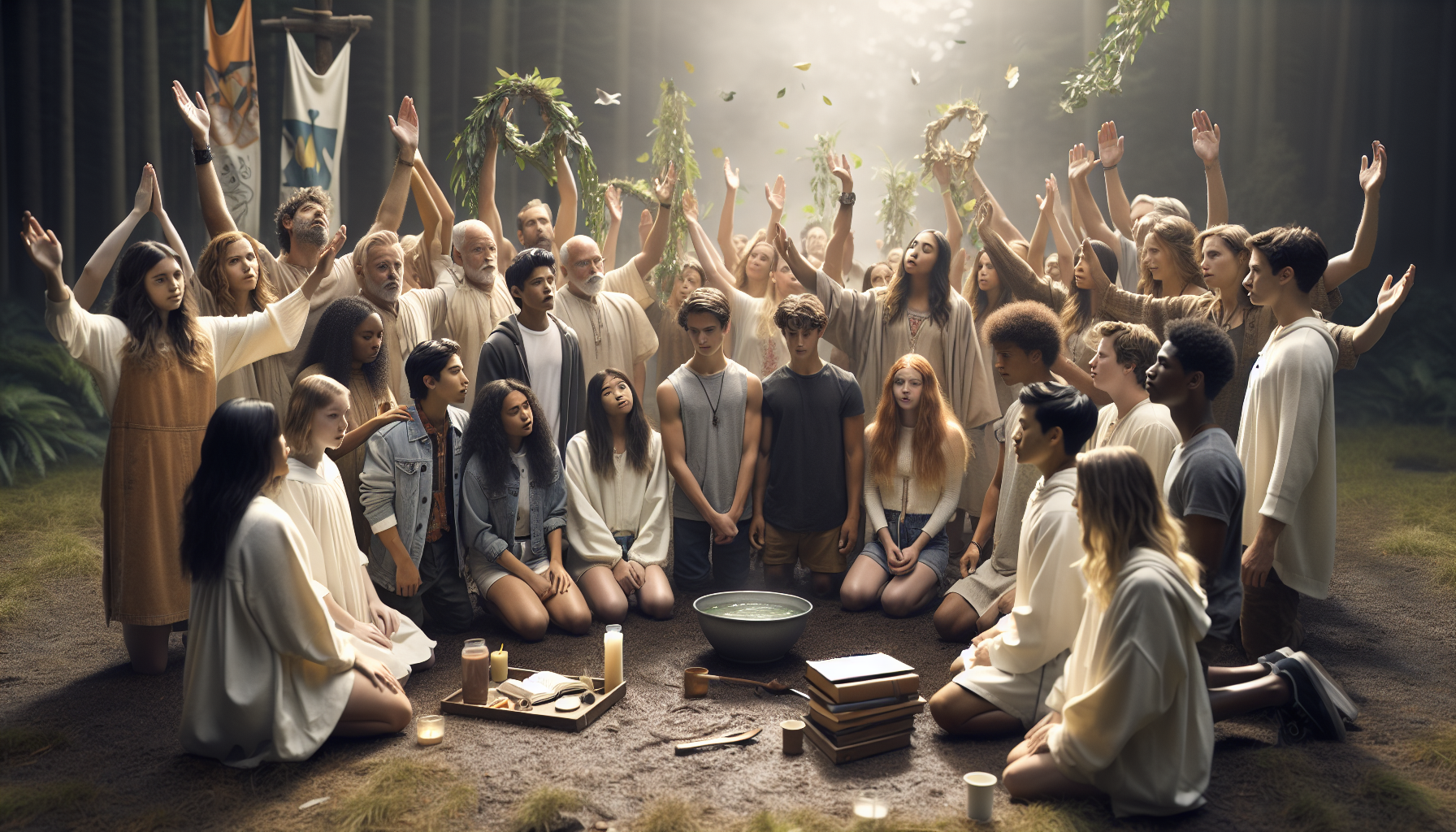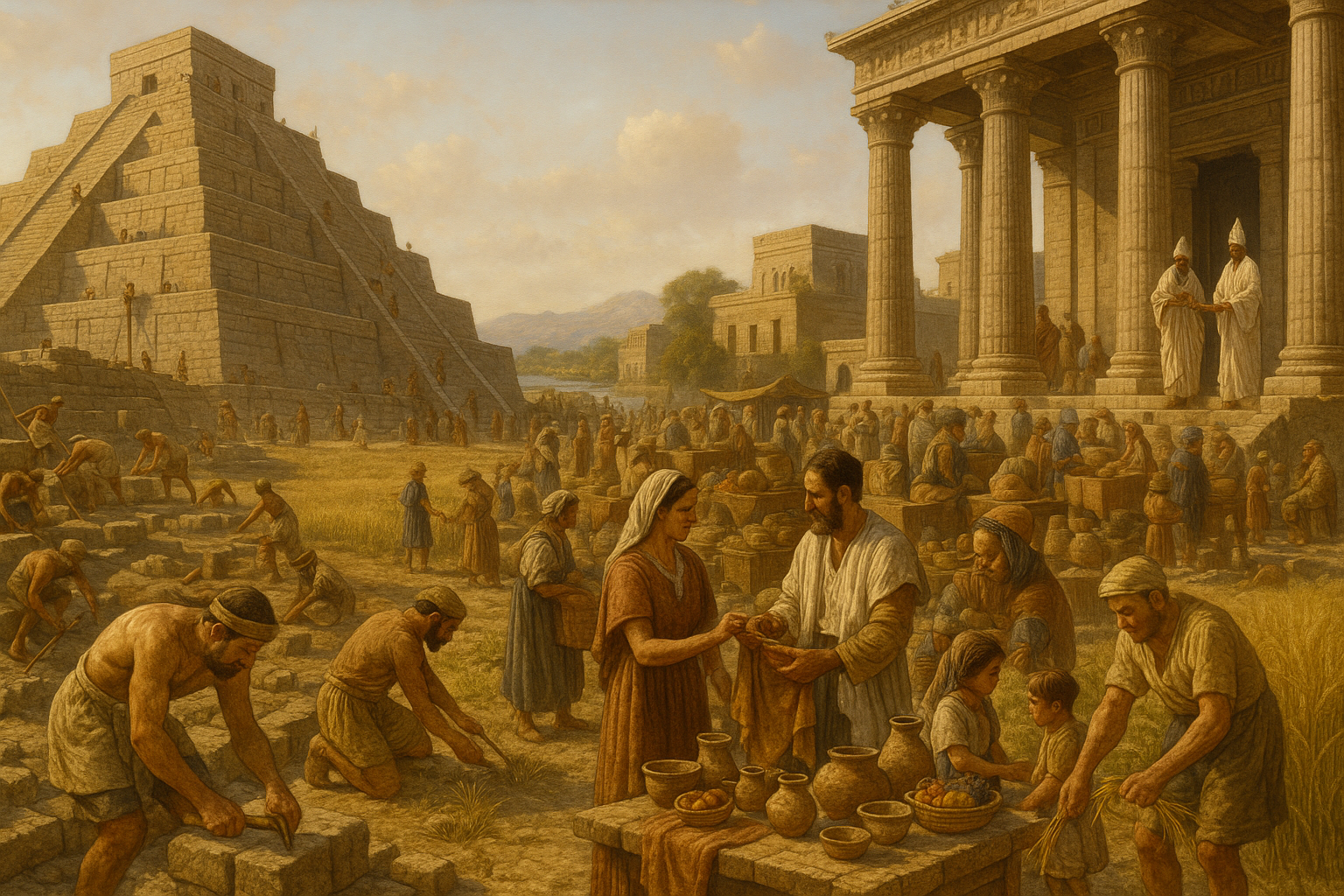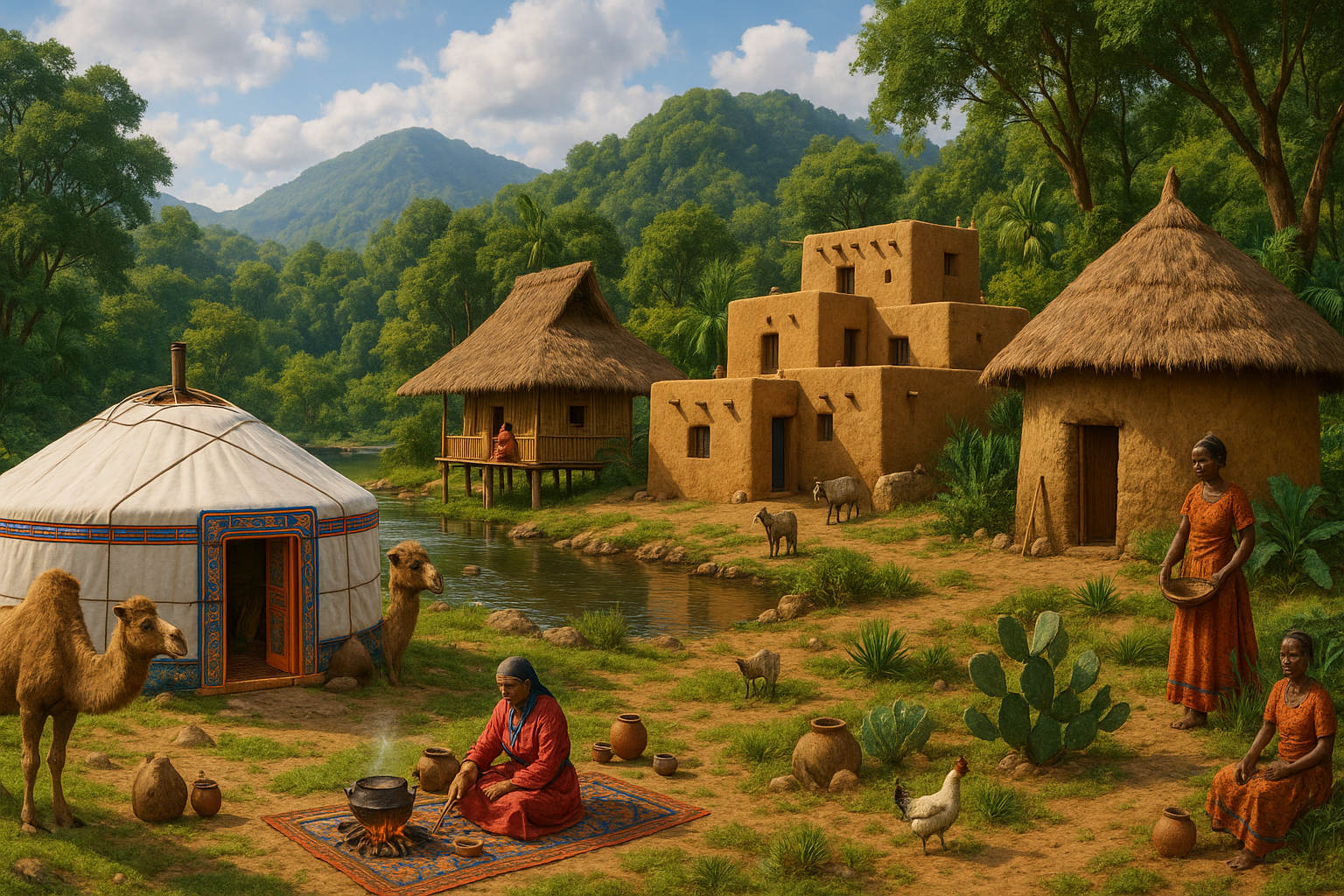Transitioning into adulthood is a pivotal chapter in every individual’s life, marked by a rich tapestry of traditions and ceremonies that guide adolescents through this transformative journey. In this ultimate guide, we delve into the fascinating world of coming-of-age rituals, exploring how different cultures celebrate this significant milestone. From the lively Quinceañera in Latin America to the solemn Bar and Bat Mitzvahs in Jewish communities, each ritual offers unique insights into cultural values and beliefs.
The guide aims to unravel the historical significance and contemporary relevance of these time-honored ceremonies. As we navigate through various regions of the world, we will explore how these rituals not only mark the transition to adulthood but also instill a sense of identity and belonging among young individuals. The social, emotional, and spiritual dimensions of these rites of passage provide a deeper understanding of the universal quest for maturity and independence.
Beyond cultural exploration, this guide will offer practical insights for adolescents and families looking to create meaningful coming-of-age experiences. By examining modern adaptations of traditional ceremonies, we will highlight how young people today are redefining these rituals to reflect their personal values and aspirations. This evolving landscape presents a unique opportunity to blend heritage with contemporary relevance, ensuring these rites remain significant in today’s fast-paced world.
Moreover, the exploration extends to lesser-known rituals and innovative practices that are emerging globally. By shining a light on these diverse traditions, the guide seeks to inspire a greater appreciation for cultural diversity and the shared human experience of growth and transition. These stories of passage and transformation, though varied, underscore the universal themes of community, responsibility, and self-discovery.
Embark on this enlightening journey through the world of coming-of-age rituals, where history meets modernity, and tradition intertwines with innovation. Discover how these ceremonies continue to shape and empower the next generation, fostering resilience and unity across cultures. Join us in celebrating the timeless essence of reaching adulthood, a journey that transcends borders and time. 🌍✨
The Significance of Coming-of-Age Rituals
Coming-of-age rituals have been an integral part of societies across the world for centuries. They serve as a bridge between adolescence and adulthood, symbolizing the transition from dependency to independence. These rituals not only affirm the individual’s new social status but also highlight the responsibilities and privileges that come with it. For many cultures, these ceremonies are steeped in tradition, underscoring values and beliefs that are central to the community’s identity.
The significance of these rituals often lies in their ability to provide a clear demarcation between different life stages. In a world where the lines between childhood and adulthood can be blurred, these ceremonies offer clarity and direction. They celebrate growth and transformation, providing adolescents with a sense of purpose and belonging. Furthermore, they often involve the community, reinforcing social ties and imparting wisdom from one generation to the next.
Importantly, these rituals also offer the individual an opportunity to reflect on their personal journey. They serve as a moment of introspection, allowing adolescents to consider their achievements, challenges, and the path they wish to take in adulthood. This process of reflection is crucial, as it helps in building a sense of self-awareness and confidence, key traits for navigating the complexities of adult life.
Diverse Traditions Around the World
North American Quinceañera
In Latin American cultures, the Quinceañera marks a girl’s transition into womanhood at the age of 15. This vibrant celebration is both a religious and social event, often starting with a mass followed by a festive gathering. The Quinceañera is dressed in an elaborate gown, symbolizing purity and her readiness to embrace new responsibilities. This celebration is a cherished moment for the family and the community, celebrating the girl’s growth and acknowledging her new role.
The Quinceañera also includes symbolic gestures, such as the “changing of the shoes” where the girl receives her first pair of high heels, representing her transition from childhood to adulthood. Additionally, she often receives a tiara, symbolizing her newfound status and responsibility. The event concludes with a dance, usually the waltz, where she dances with her father, further symbolizing the bond and support as she steps into this new phase of life.
Japanese Seijin Shiki
In Japan, Seijin Shiki, or Coming of Age Day, is a national holiday celebrated on the second Monday of January. This ceremony marks the transition of young Japanese individuals into adulthood, legally recognized when they turn 20. The day is marked by ceremonies held at local city offices, where government officials give speeches and small presents to the new adults.
The Seijin Shiki is a day of pride for the young adults, who often dress in traditional attire. Women wear furisode, a type of kimono with long sleeves, while men typically wear suits or traditional hakama. After the official ceremonies, the newly recognized adults often celebrate with family and friends, enjoying the newfound freedoms and responsibilities of adulthood. This event is a testament to Japan’s rich cultural heritage and the importance placed on community and tradition.
Modern Interpretations of Coming-of-Age
Bar and Bat Mitzvah in Jewish Culture
The Bar and Bat Mitzvah are Jewish coming-of-age ceremonies for boys and girls, respectively. Traditionally, these ceremonies mark the age at which a Jewish child becomes responsible for their actions and can participate in all areas of Jewish community life. For boys, this occurs at 13, and for girls, at 12. These ceremonies are deeply rooted in religious tradition and involve the child leading part of the synagogue service, demonstrating their understanding of Jewish law and ethics.
The celebration typically includes a large gathering with family and friends, where the Bar or Bat Mitzvah gives a speech reflecting on their journey and thanking those who have supported them. This event is not only a rite of passage for the individual but also a celebration for the entire community. It serves as a reminder of the values and traditions that bind the Jewish community together.
Western Graduation Ceremonies
In Western cultures, graduation ceremonies serve as a modern interpretation of coming-of-age rituals. While not rooted in ancient tradition, these ceremonies mark the completion of a significant educational milestone and the transition into a new phase of life. Whether it’s high school or university, graduations symbolize achievement, growth, and the readiness to tackle future challenges.
The ceremony typically includes the conferring of degrees, speeches, and the traditional cap and gown. Graduations offer a moment of reflection on the journey thus far and the opportunities that lie ahead. They bring together students, educators, and families, celebrating the individual’s accomplishments and the collective efforts of all involved. This modern rite of passage is a significant moment in the lives of young adults, marking their readiness to enter the workforce or continue their education.
Challenges and Opportunities in Modern Times
Adapting Traditions to Contemporary Life
In today’s rapidly changing world, coming-of-age rituals face the challenge of maintaining relevance while adapting to contemporary life. With globalization and cultural exchange, traditional ceremonies are often infused with modern elements, creating unique interpretations that resonate with today’s youth. However, the core purpose remains: to mark the transition to adulthood and the responsibilities that accompany it.
For many young people, balancing traditional values with modern realities can be challenging. Yet, this fusion presents an opportunity for cultural enrichment and personal growth. By embracing both traditional and modern elements, adolescents can create a coming-of-age experience that is meaningful and reflective of their unique identity. This adaptability ensures that these important rituals continue to play a crucial role in personal and cultural development.
Empowerment and Personal Growth
One of the most significant aspects of coming-of-age rituals is the empowerment they provide to young individuals. These ceremonies are not just about recognizing new responsibilities; they are about empowering adolescents to take charge of their lives and their futures. Through these rituals, young people are encouraged to reflect on their personal goals, develop a sense of self-awareness, and build confidence in their abilities.
Moreover, these rituals offer an opportunity for personal growth, challenging adolescents to step out of their comfort zones and embrace the challenges of adulthood. This empowerment is essential for navigating the complexities of modern life, where young adults must make important decisions about their careers, relationships, and personal aspirations. Ultimately, coming-of-age rituals serve as a powerful catalyst for personal development, preparing young individuals for the exciting journey ahead.
Conclusion
In conclusion, “Embracing Adulthood: The Ultimate Guide to Coming-of-Age Rituals for Adolescents” highlights the enduring significance of these pivotal ceremonies. Across cultures, coming-of-age rituals mark the profound transition from adolescence to adulthood, offering clarity and purpose in a world where these boundaries can often be indistinct. By celebrating growth and independence, these rituals provide young individuals with a deeper understanding of their roles and responsibilities within their communities. 🌟
Moreover, as our world becomes increasingly interconnected, the adaptation and fusion of traditional rituals with contemporary elements offer unique opportunities for cultural enrichment. This blend allows today’s youth to honor their heritage while simultaneously embracing modernity. Importantly, these ceremonies empower young people, encouraging self-reflection, confidence, and the courage to embrace the challenges of adult life.
Whether through a Quinceañera in Latin America, a Seijin Shiki in Japan, or a Bar/Bat Mitzvah in Jewish culture, these rituals unite communities, bridging generations and reinforcing shared values. As these ceremonies evolve, their core purpose remains the same: to prepare adolescents for the exciting and complex journey of adulthood, fostering personal growth and community cohesion. Ultimately, coming-of-age rituals remain a vital part of our cultural fabric, guiding young individuals as they step confidently into their futures. 🎉

Toni Santos is a visual storyteller and experimental artisan whose work explores the strange frontiers where science meets art. Fascinated by the forgotten, the obscure, and the wonderfully absurd, Toni brings bizarre scientific experiments to life through provocative visual narratives and handcrafted creations that blur the line between curiosity and discovery.
His journey is rooted in a passion for the eccentric side of science — from electric shocks on cadavers to botany in hostile environments, from Victorian medical oddities to animal behavior gone rogue. Each project Toni undertakes sheds light on real (and sometimes questionable) scientific ventures that push the boundaries of human understanding.
With a background in visual design and hands-on craftsmanship, Toni blends artistic precision with conceptual boldness. His creations aren’t just decorative — they provoke, disturb, and invite the viewer to reconsider what counts as science, progress, or even sanity. Often inspired by true experiments — like galvanic resurrection, psychological endurance tests, or 19th-century pseudo-science rituals — Toni’s work reanimates these bizarre chapters of history with aesthetic intrigue and critical reflection.
As the creative force behind Vizovex, Toni invites you to explore a world where the strange becomes symbolic, the grotesque becomes beautiful, and every experiment tells a story worth unearthing.
His work pays tribute to:
The brilliant madness of forgotten experiments
The symbolic power of science at the edge of reason
The beauty in questioning what we think we know
Whether you’re a curious mind, a lover of scientific history, or simply drawn to the uncanny, Toni welcomes you to explore a realm where aesthetics and absurdity collide — one experiment, one mystery, one creation at a time.





